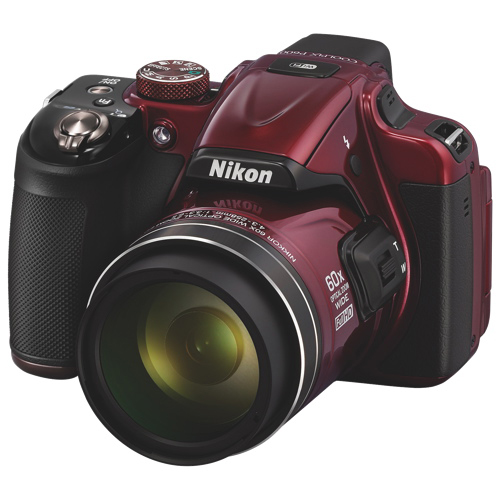 There’s a lot of camera categories out there, but let’s face it, none sounds cooler than hyperzoom. These are the cameras that offer 30x optical zoom (or greater) and allow you to get photos that you cannot otherwise get, without some seriously expensive (professional) equipment.
There’s a lot of camera categories out there, but let’s face it, none sounds cooler than hyperzoom. These are the cameras that offer 30x optical zoom (or greater) and allow you to get photos that you cannot otherwise get, without some seriously expensive (professional) equipment.
Hyperzooms come with a fixed lens, which is not interchangeable.
I had the pleasure of reviewing the Sony DSC-H300 recently and honestly you have to try one of these cameras out to believe how powerful the zoom capability is. Here’s a couple of photos that I took with the DSC-H300 at either extreme of the focal range.


Hard to believe they’re taken from the same vantage point, right?
Now I’m not going to deceive you here and pretend that the image quality is mind-blowing, because it’s not. It is acceptable (and also affected by the shooting conditions), and the bottom line is, a hyperzoom enables you to get photos that otherwise you would not be able to get. I mean a 4 kilometer gap becomes a minor thing when you have a hyperzoom in your hands.
Now if you’ve ever shot with a big zoom lens (and I’m talking about 200mm plus) then you’ll know that camera shake quickly becomes an issue when you start working in the higher focal lengths. Imagine holding a very straight stick and trying to keep it steady. If the stick is short, it’s easy. But the longer the stick the more those minor movements of your hand are amplified, and what that means for us photographers is blurred photos.
Nature photographers and sports photographers overcome this problem by using tripods or monopods. Hyperzooms are aimed at a more casual user though who is unlikely to carry a tripod at all times, and so they rely on image stabilization. Image stabilization is an internal system which counteracts camera movements in order to produce a sharp image.
Hyperzoom cameras fall into the ‘point-and-shoot’ category, because of their small sensor size, which means they’re very affordable. They’re not all small enough to fit in your pocket though, which is something we often associate with point-and-shoots. In fact some hyperzooms look and feel like a small DSLR, with a nice big handgrip that makes them really easy to handle.
 One of the tricky things about shopping for and comparing hyperzooms is the nomenclature. Most models tell you the zoom capabilities as ‘35x’ or’60x’. But what does this actually mean? Looking at the Nikon Coolpix P600 (pictured), it’s optical zoom is quoted as ‘60x’, while it’s focal range is 4.3mm – 255mm, which then needs to be converted into the full- frame or 35mm equivalent which is 24mm – 1440mm. So what this tells us is that if you own a DSLR, you would need a pile of lenses to cover that focal range. The longest lens Canon makes is an 800mm lens and it’ll set you back about $14,000. And you’re still falling short of the P600’s maximum focal length. For another $500 however you can buy something called a 2x extender which sits between your lens and your camera body and effectively increases the focal length by a factor of two, so your 800mm lens becomes a 1600mm, which is basically like taking photos through a telescope!
One of the tricky things about shopping for and comparing hyperzooms is the nomenclature. Most models tell you the zoom capabilities as ‘35x’ or’60x’. But what does this actually mean? Looking at the Nikon Coolpix P600 (pictured), it’s optical zoom is quoted as ‘60x’, while it’s focal range is 4.3mm – 255mm, which then needs to be converted into the full- frame or 35mm equivalent which is 24mm – 1440mm. So what this tells us is that if you own a DSLR, you would need a pile of lenses to cover that focal range. The longest lens Canon makes is an 800mm lens and it’ll set you back about $14,000. And you’re still falling short of the P600’s maximum focal length. For another $500 however you can buy something called a 2x extender which sits between your lens and your camera body and effectively increases the focal length by a factor of two, so your 800mm lens becomes a 1600mm, which is basically like taking photos through a telescope!



